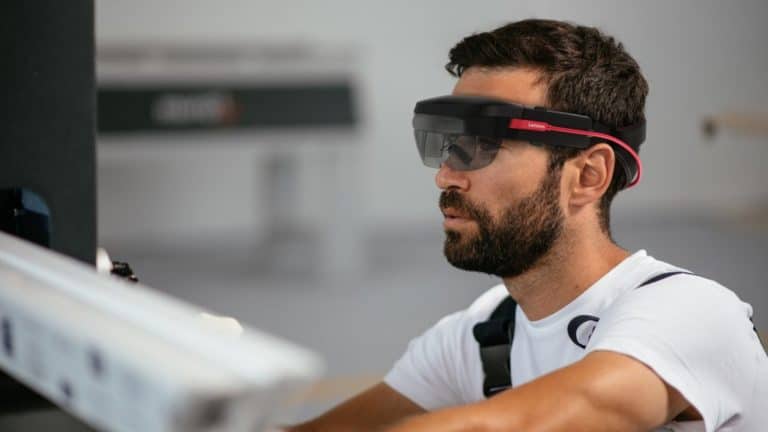Lenovo has unveiled a new platform for augmented and virtual reality called ThinkReality. ThinkReality consists of both software and hardware and is focused on the enterprise. With this, the platform will compete with Microsoft’s HoloLens, writes ZDNet.
The ThinkReality portfolio already has a first device. This is the ThinkReality A6, a heads-up, hands-free device that weighs 380 grams. The headset has a 40 degree diagonal field of view with a resolution of 1080p per eye. The whole thing is controlled by an Android-based compute box, which contains the Qualcomm Snapdragon 845 Mobile XR Platform.
The new ThinkReality platform is device- and cloud-agnostic, meaning enterprise users can use it to manage augmented and virtual reality software applications across multiple operating systems, cloud services or devices.
Lenovo further states that the ThinkReality platform is designed for a range of augmented reality applications. These include solutions that reduce repair times, streamline workflows, improve collaborations or improve employee training.
ThinkIoT
Lenovo has also unveiled to expand its ThinkIoT ecosystem. The company is now running a pilot program on its Beijing campus to test a new automated computer vision desk clerk. The device is designed for retailers who want to remove cash register employees from the checkout process. In addition, the long queues and errors in prices caused by automated payment systems must also be eliminated.
The prototype comes with an integrated camera, processor and sensors that allow a shopper to scan all his products in one go, without relying on barcodes. It can also weigh up purchases in order to give feedback to suppliers. Finally, it allows a virtual gateway for payments from a wallet.
Lenovo is also expanding its IT business with a new partnership with Microsoft Azure. Joint customers can use Lenovo ThinkIoT hardware, software and services with Azure solutions for IoT, artificial intelligence and data management. These include Azure SQL Database Edge.
This news article was automatically translated from Dutch to give Techzine.eu a head start. All news articles after September 1, 2019 are written in native English and NOT translated. All our background stories are written in native English as well. For more information read our launch article.